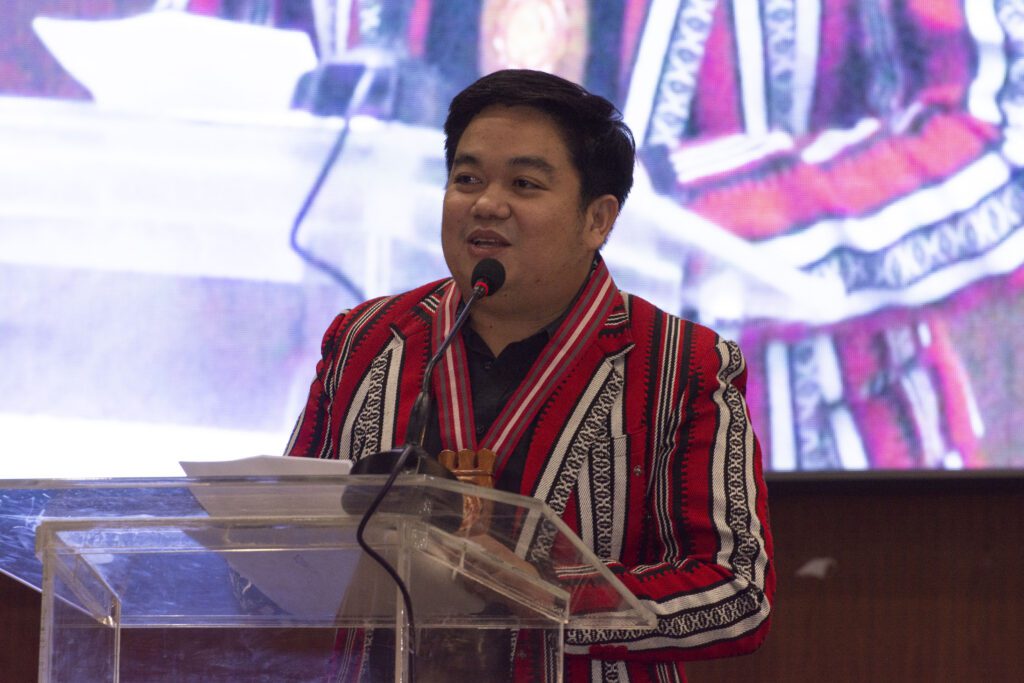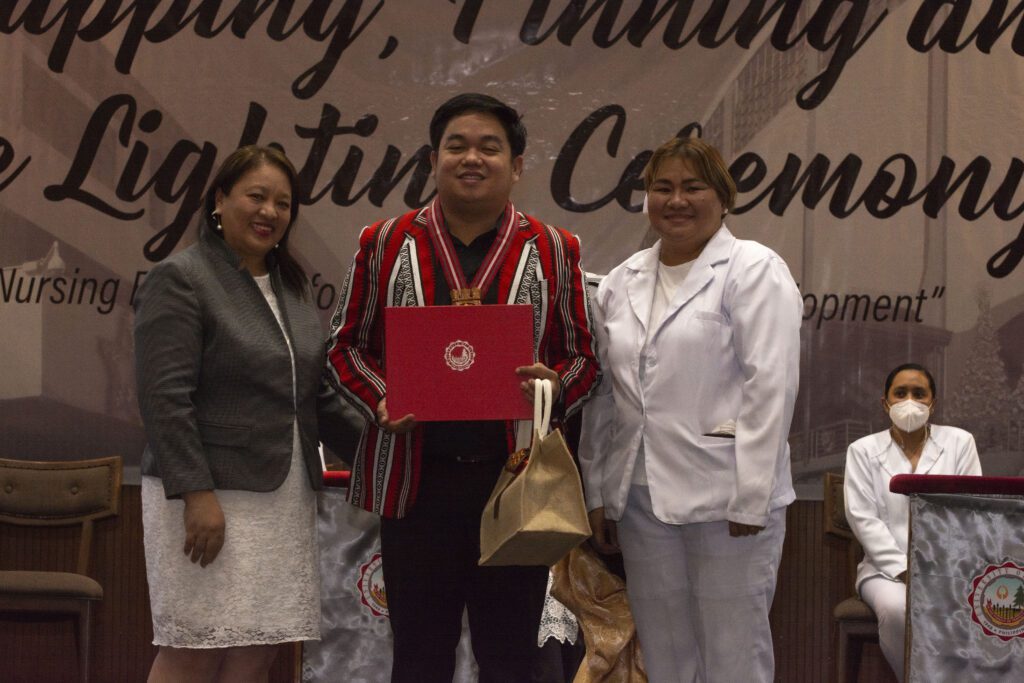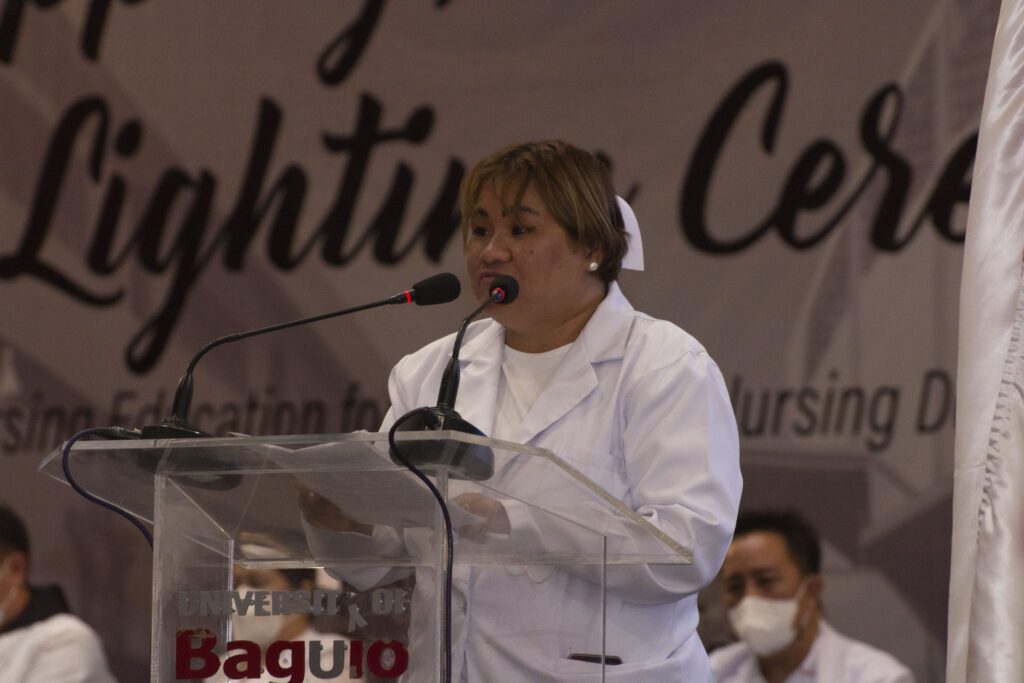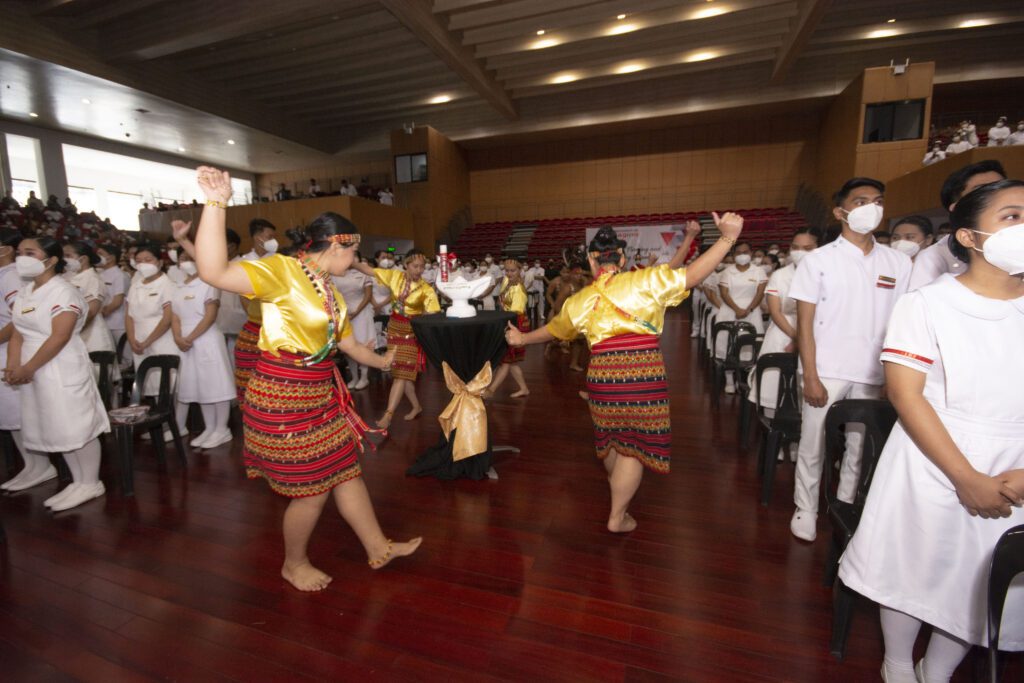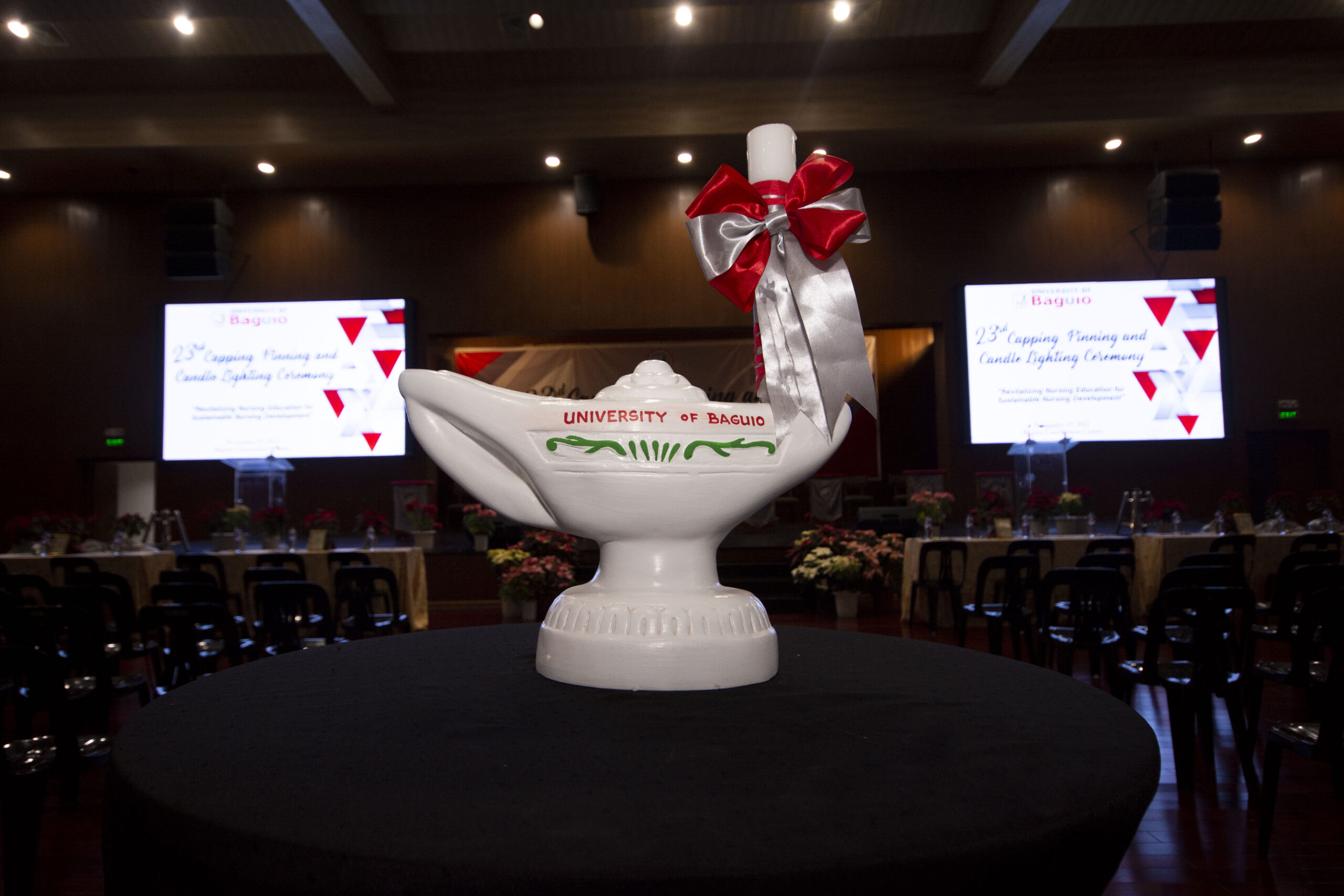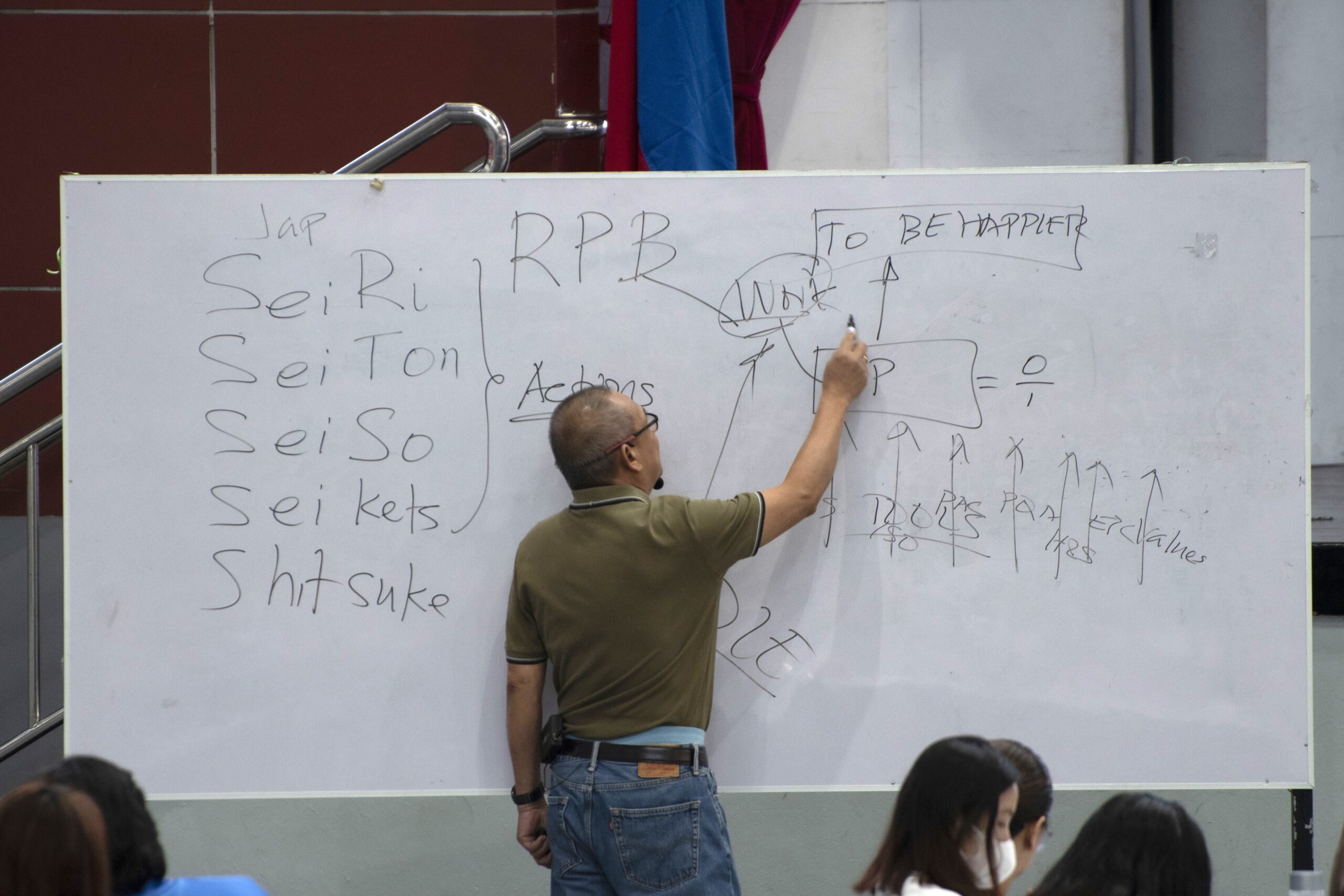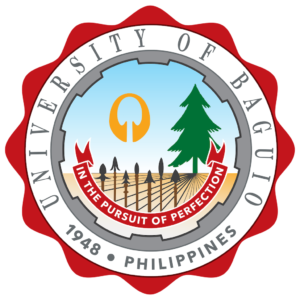With its continuous pursuit of producing globally competitive professionals, the University of Baguio celebrates a milestone among its future nurses.
The University of Baguio’s School of Nursing (SON) has recently finished their 23rd Capping, Pinning and Candle Lighting ceremony. Check out some of the highlights during this momentous occasion.

The Meaning of the Cap and Pin
For nursing students, receiving their cap and pin is a huge milestone in their education towards being professional nurses. This signifies their official welcome into the world of nursing.
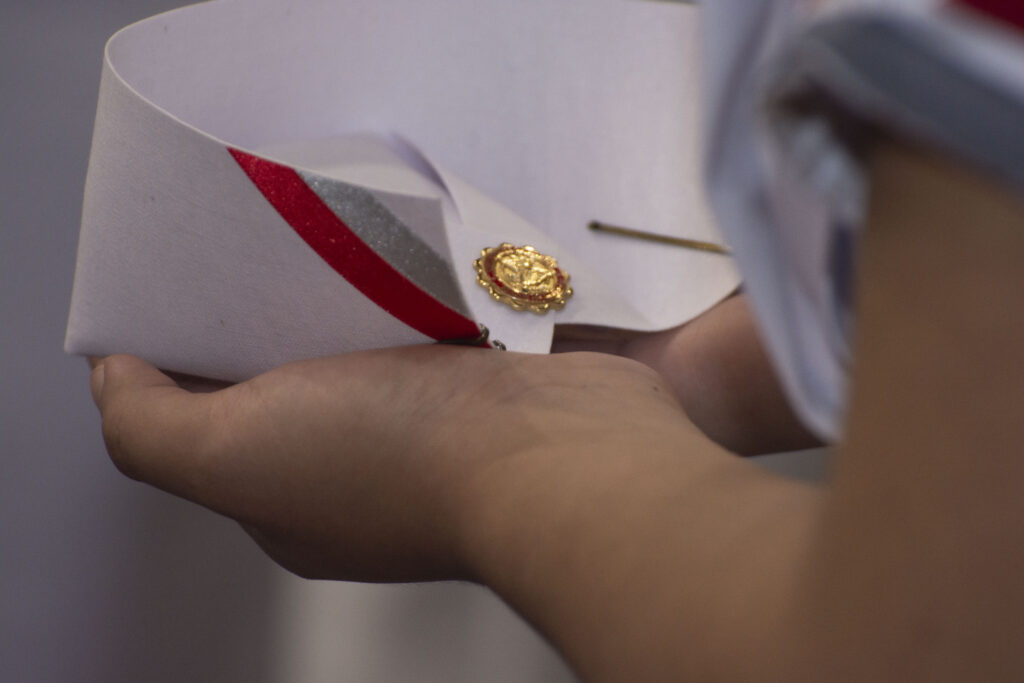
Receiving their cap and pin is a symbol of their official initiation into the sisterhood and brotherhood of nurses. They have successfully finished learning the basics of their noble profession and are now ready to put those theories into practice.
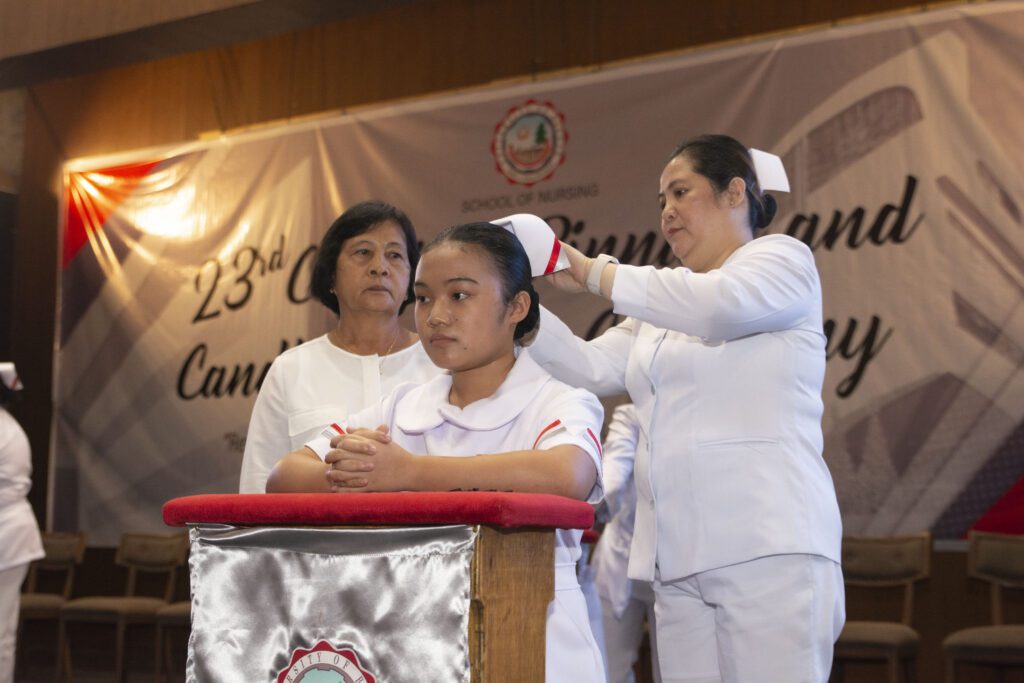
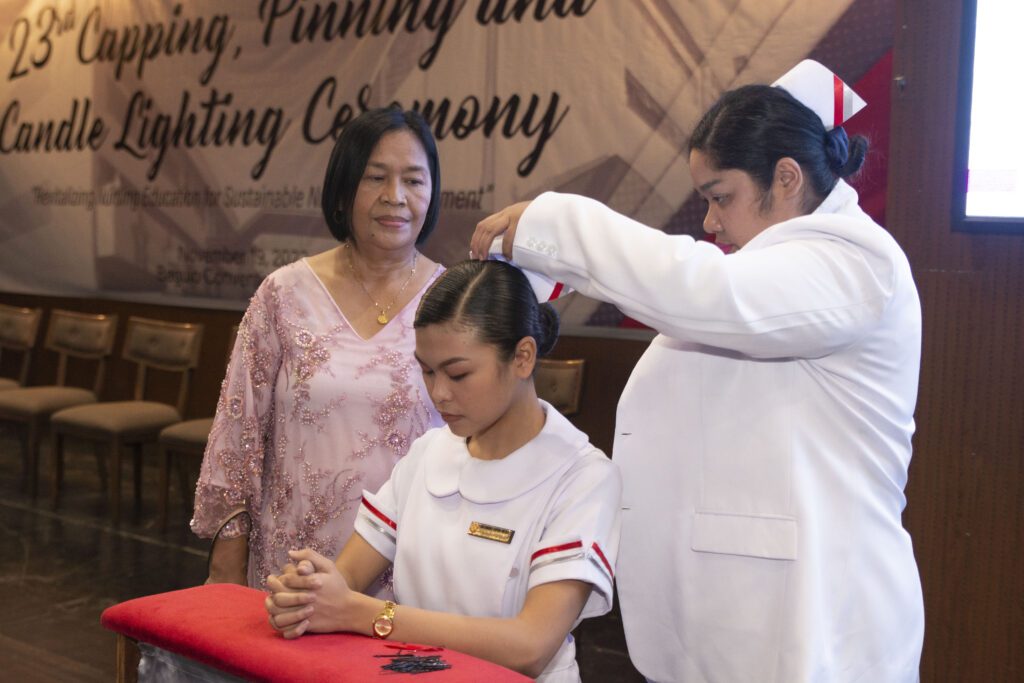
“The pinning ceremony is a time-honored nursing school tradition and often more personally meaningful than the graduation ceremony,”
Lenora Bodway, Director of Nursing at Concorde’s campus in Jacksonville, Fla.
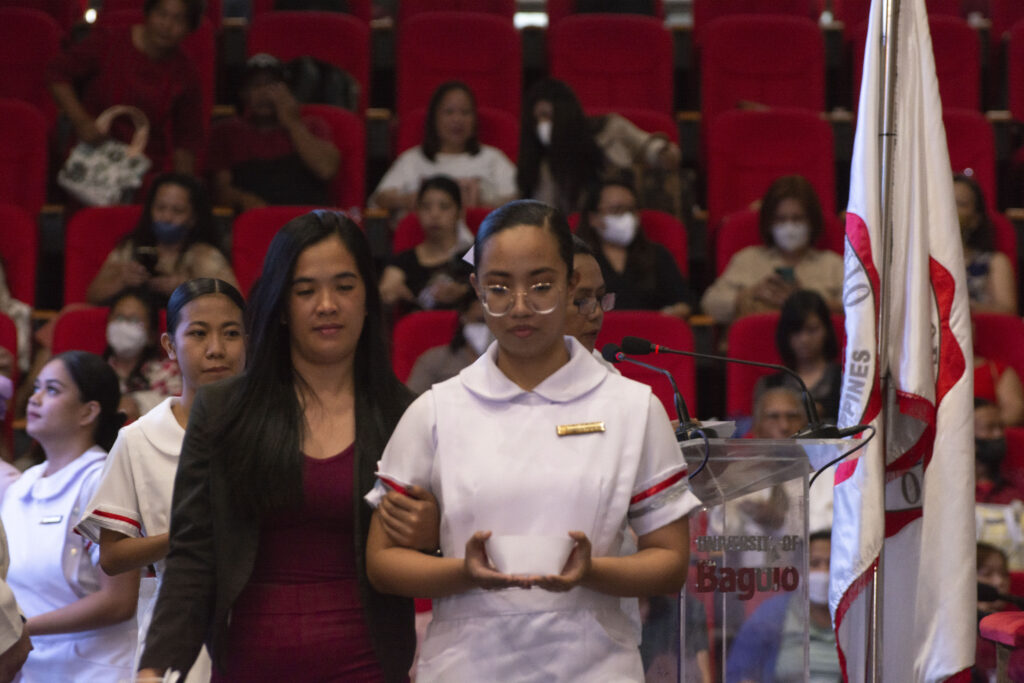
More than a tradition, the capping and pinning ceremony are symbols of the nursing student’s hard work and dedication to their course, practice, and clinicals.
They have proven themselves worthy of wearing the cap and pin that essentially shows off that they are capable nurses.
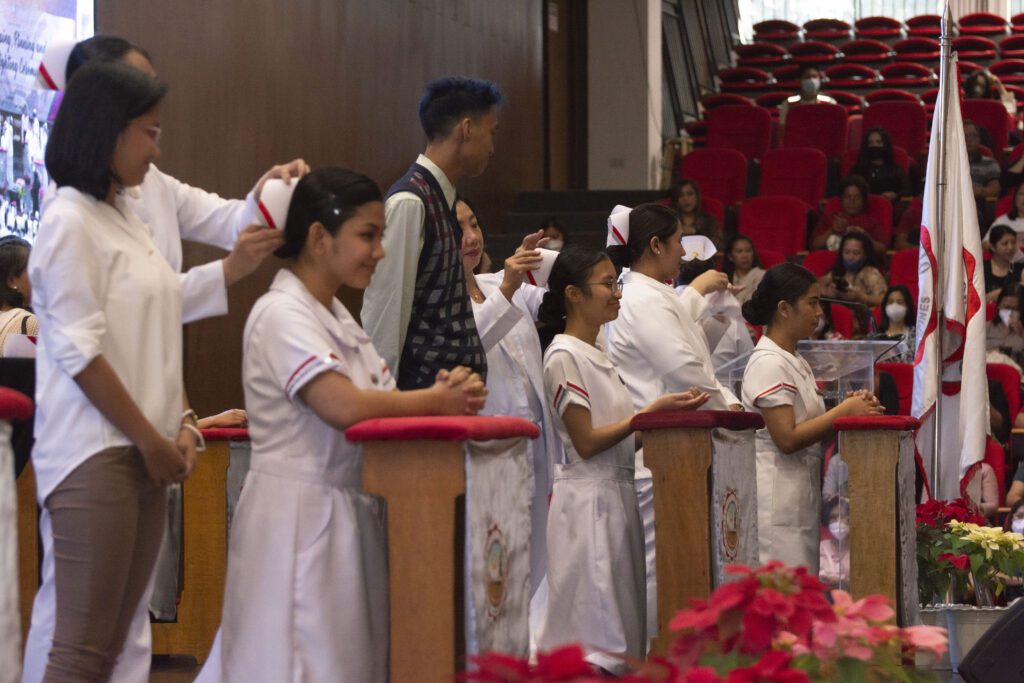
The History of the Capping and Pinning Ceremony
The capping and pinning ceremony as a tradition can be traced back to the 12th century. During this time knights under the order of the Hospital of St. John the Baptist tended to the injured during the crusades. It was their duty to tend to injuries and house the sick during their crusades.
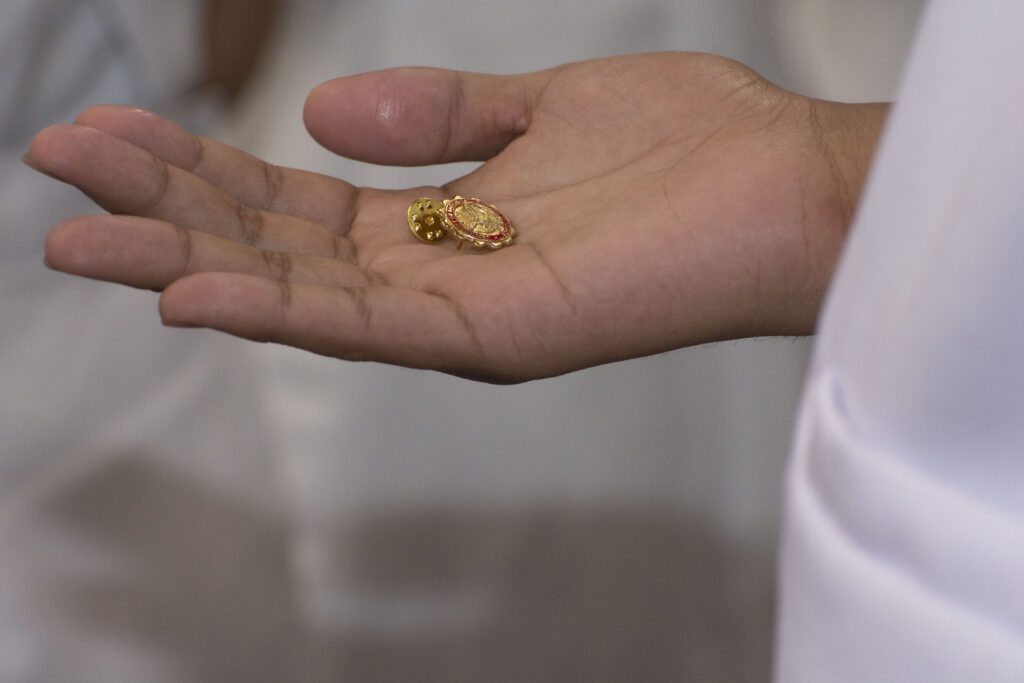
These knights wore a badge given to them when they were first initiated into the order. That badge was called the Maltese cross, a symbol of those who heal those in need.
The actual pinning and capping ceremony however can be traced back to the legendary nurse, Florence Nightingale, a name that should resonate well with any nurse. In 1855 she received the Red Cross of St. George by Queen Victoria in recognition for her tireless service to the injured during the Crimean War. Once she started teaching others, she in turn started presenting a medal of excellence to her brightest students.
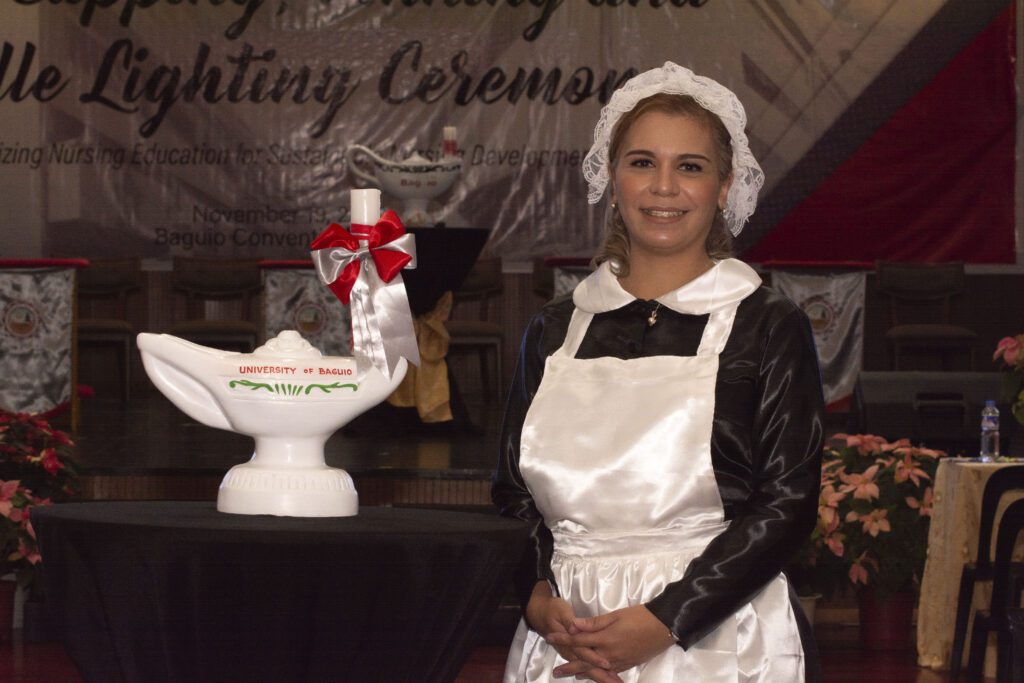
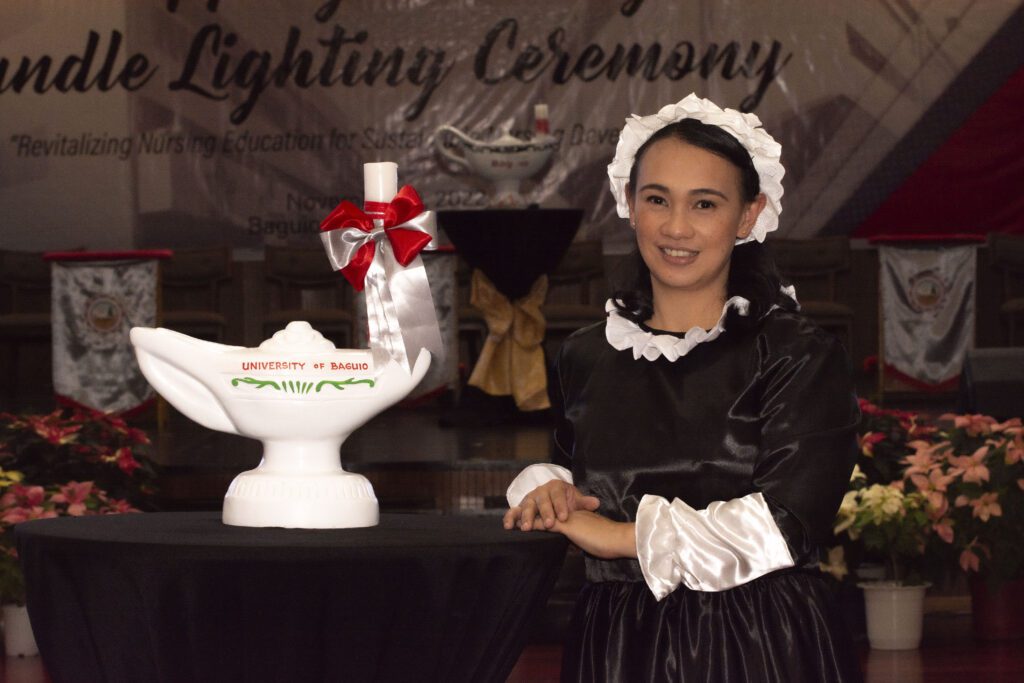
What Happens in a Capping and Pinning Ceremony?
During this event, family and friends are allowed to come join and watch as this event is usually public. However, following health protocols, the University of Baguio temporarily limited the amount of people allowed to join the actual ceremony.
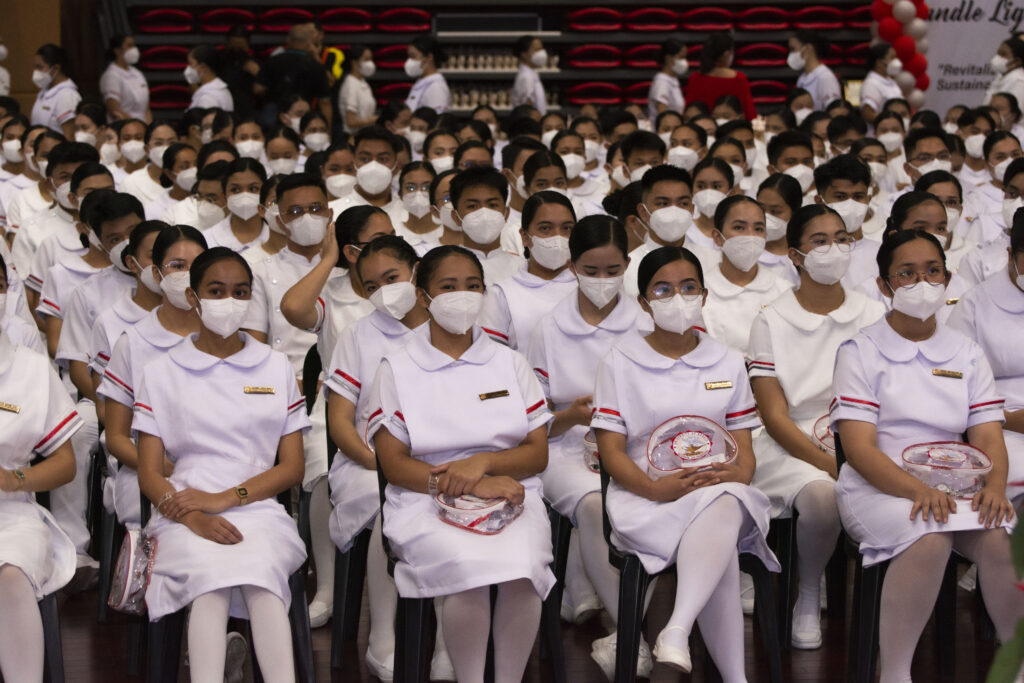
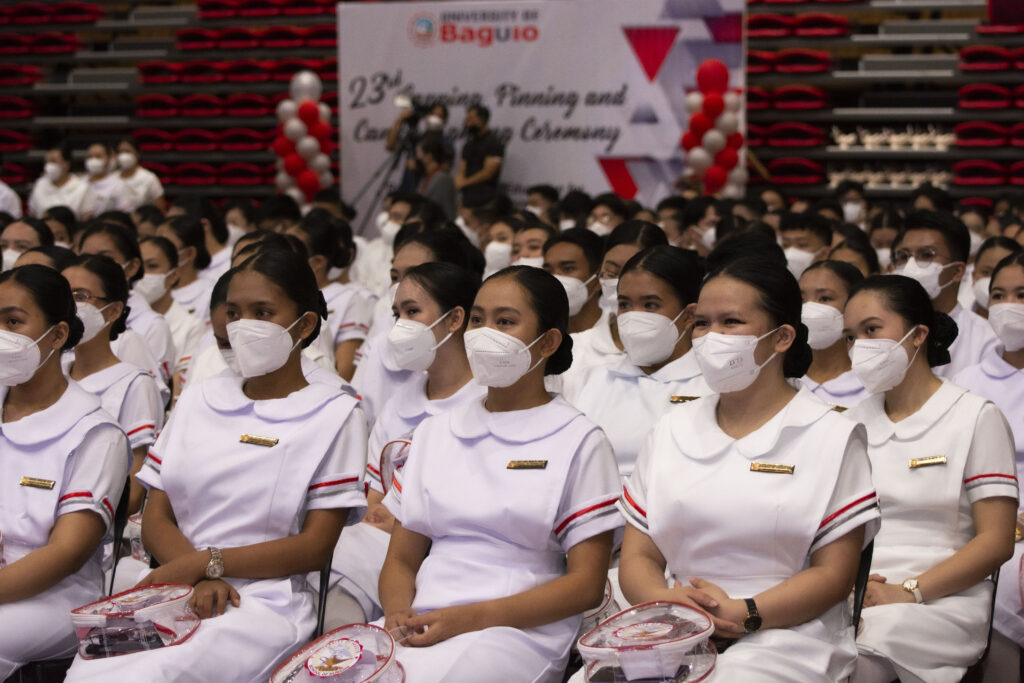
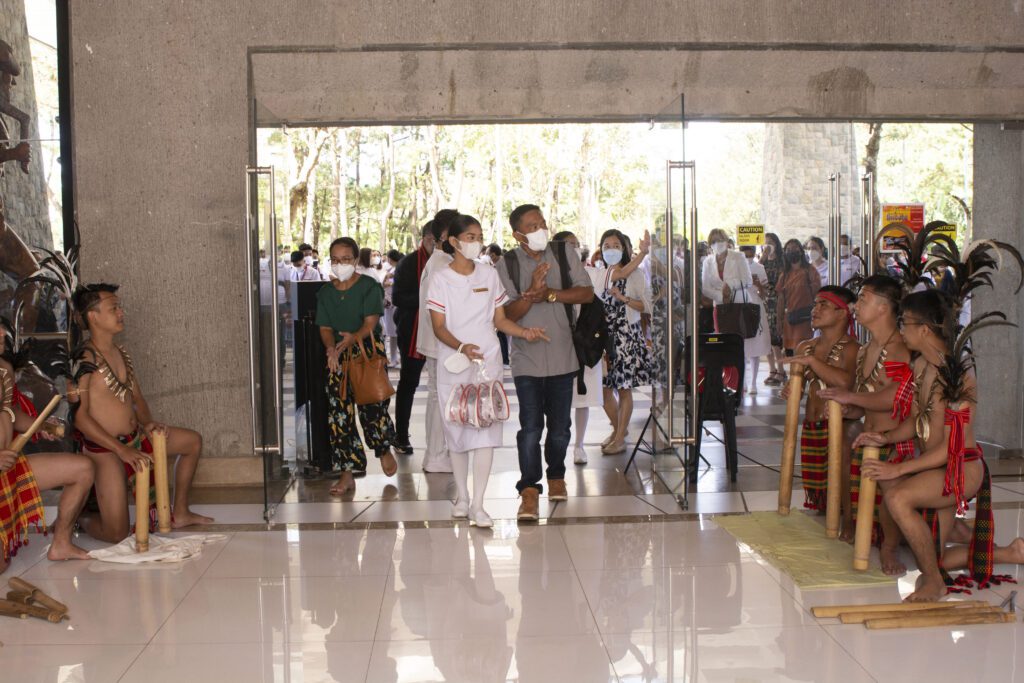
Before the ceremony, the nursing student can dedicate their pin to anyone significant in their lives, especially someone who has helped them reach this stage. This person could be a family member, a friend, a partner, a faculty, or anyone they deem important for that event.
That chosen person would then walk up to the stage with them and place the pin on the nursing student,
A during their pinning, a dedication from the student to the significant person is read, though this tradition is not always followed. The history of the pinning ceremony is also briefly explained to all who attended.
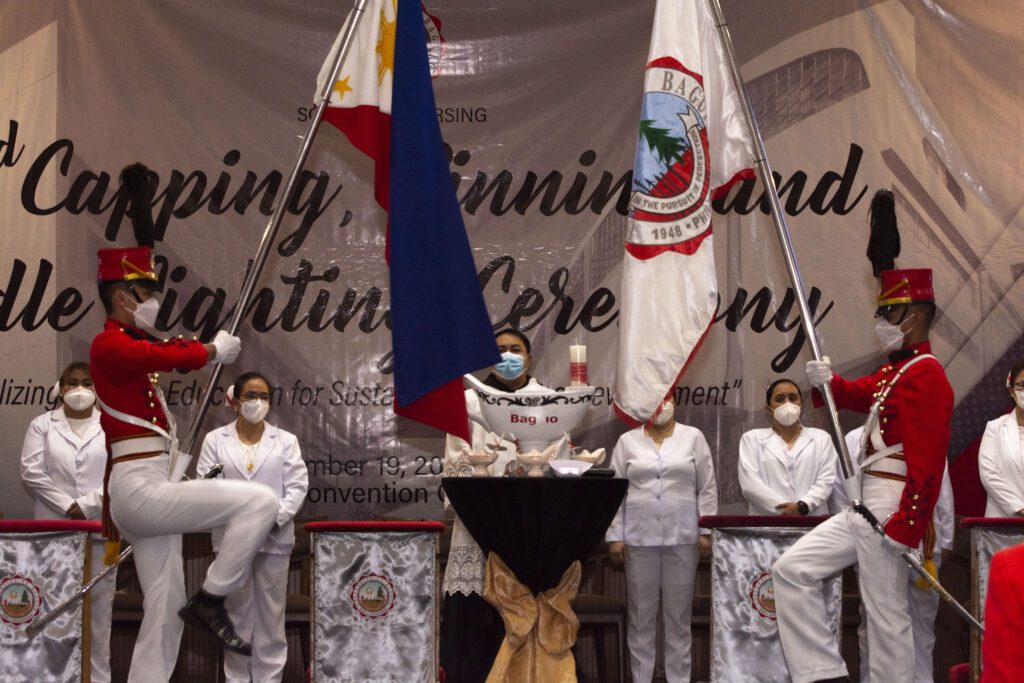
The Candle Lighting
Typically, a candle lighting ceremony is also held. The candle also holds a significant meaning among nurses and nursing students.
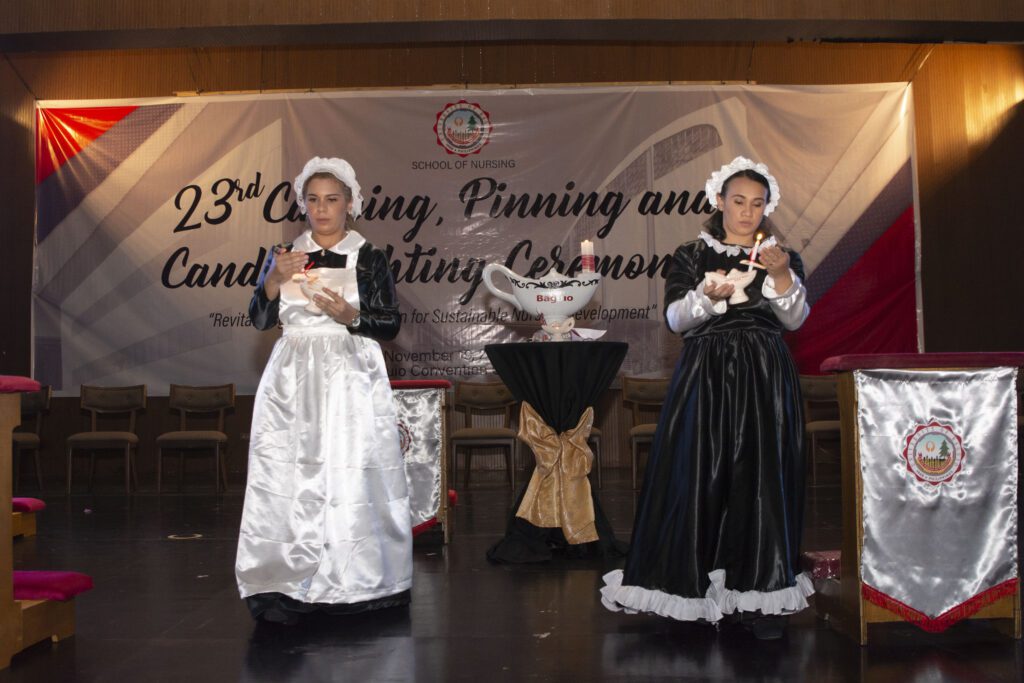
The candle lighting, or lamp lighting, ceremony is done to commemorate the dedication of Florence Nightingale in tending to her patients even at night.
During her time, the legendary nurse tended to the wounded soldiers by candlelight making sure they got the treatment they needed regardless of the time of day. Hence why she as also called “the lady with the lamp.”
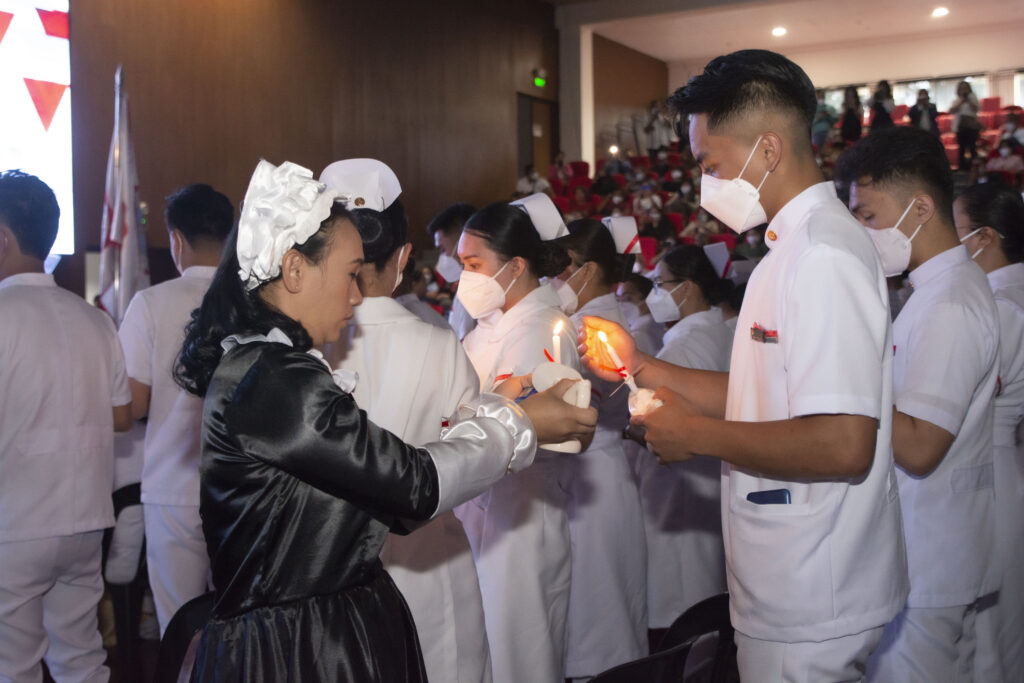
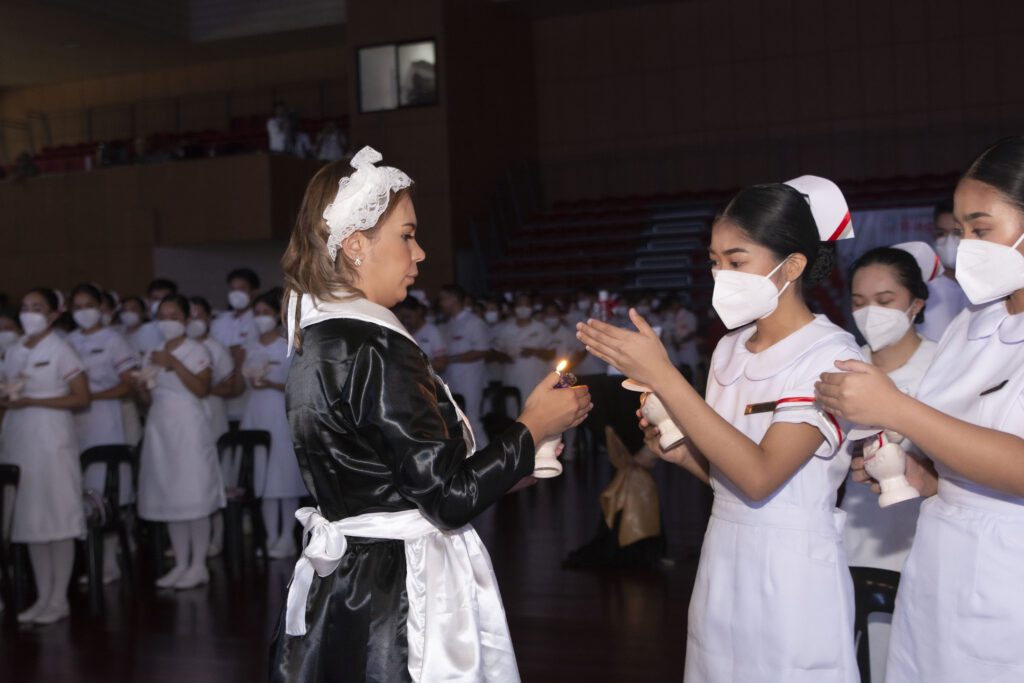
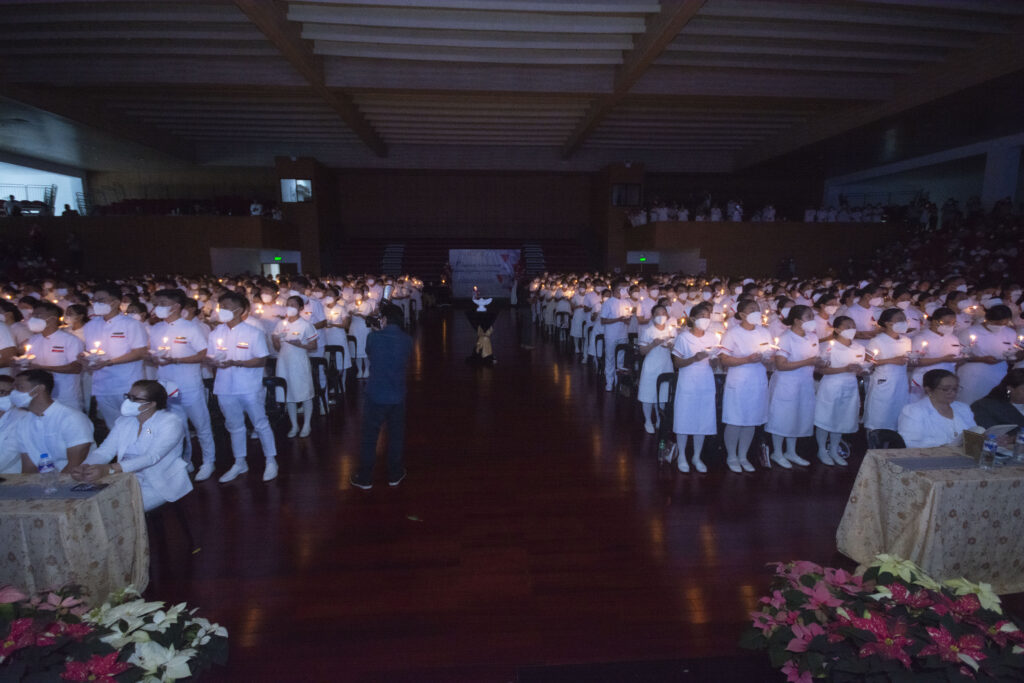
Once all nursing students have their candle lit. they then proceed to recite the Nightingale Pledge:
I solemnly pledge myself before God and in the presence of this assembly, to pass my life in purity and to practice my profession faithfully. I will abstain from whatever is deleterious and mischievous and will not take or knowingly administer any harmful drug. I will do all in my power to maintain and elevate the standard of my profession, and will hold in confidence all personal matters committed to my keeping, and all family affairs coming to my knowledge in the practice of my calling. With loyalty will I endeavor to aid the physician in his work, and as a ‘missioner of health’ I will dedicate myself to devoted service to human welfare.
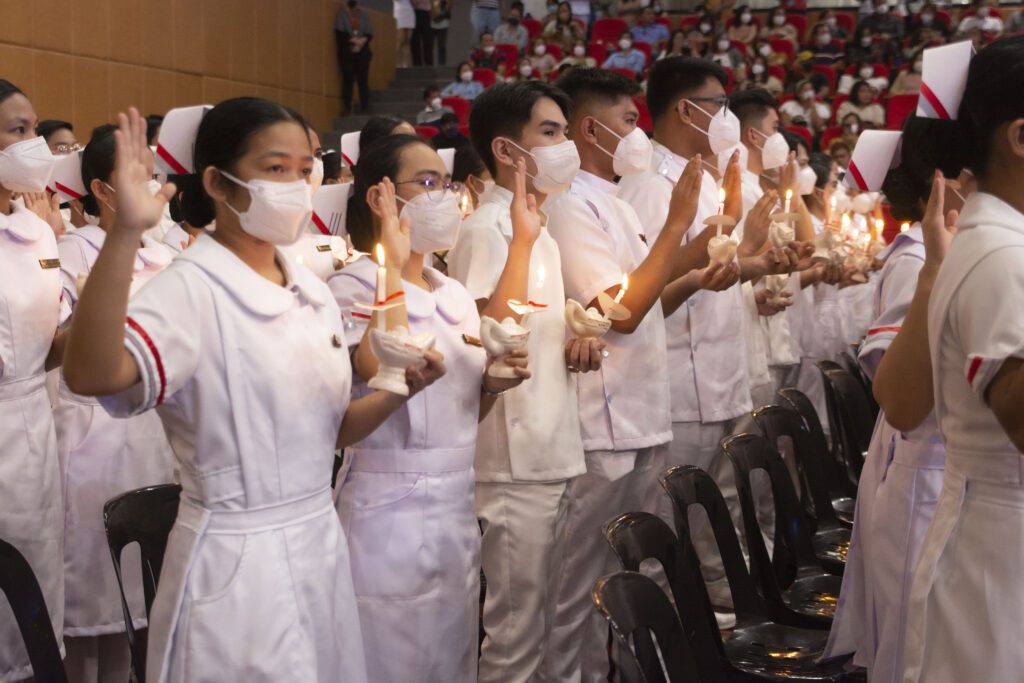
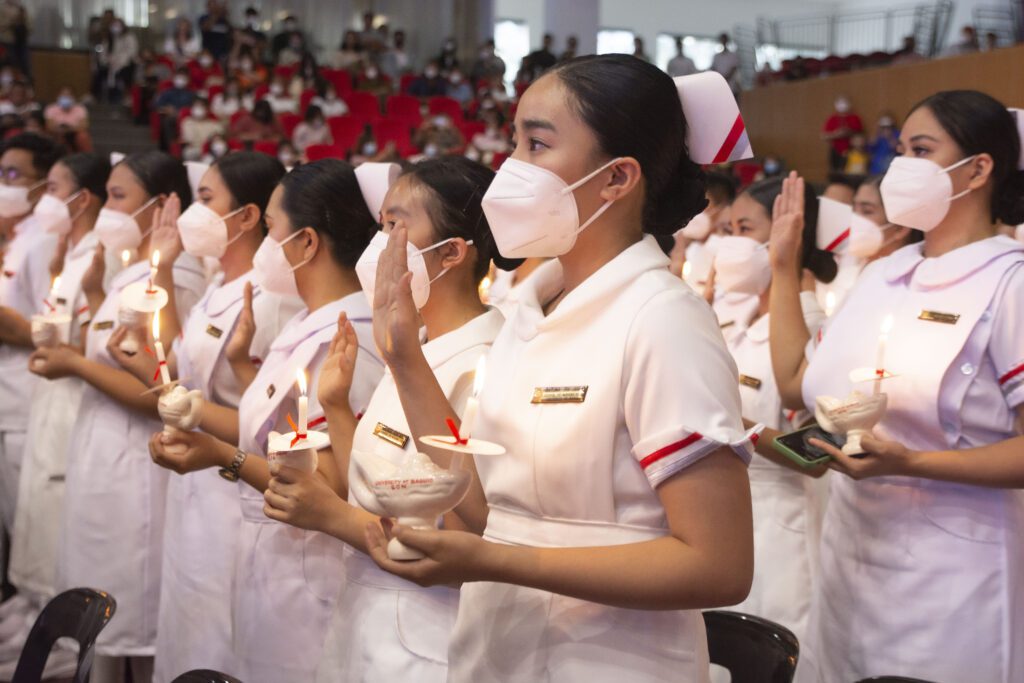
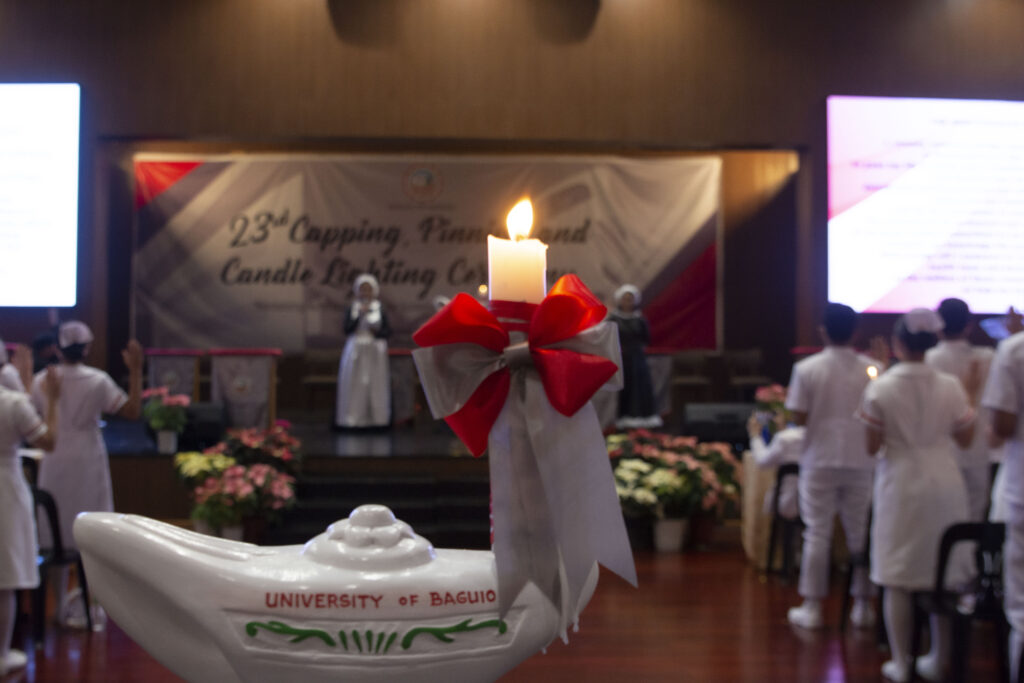
Other Highlights During UB’s 23rd SON Capping, Pinning, and Candle Lighting Ceremony
